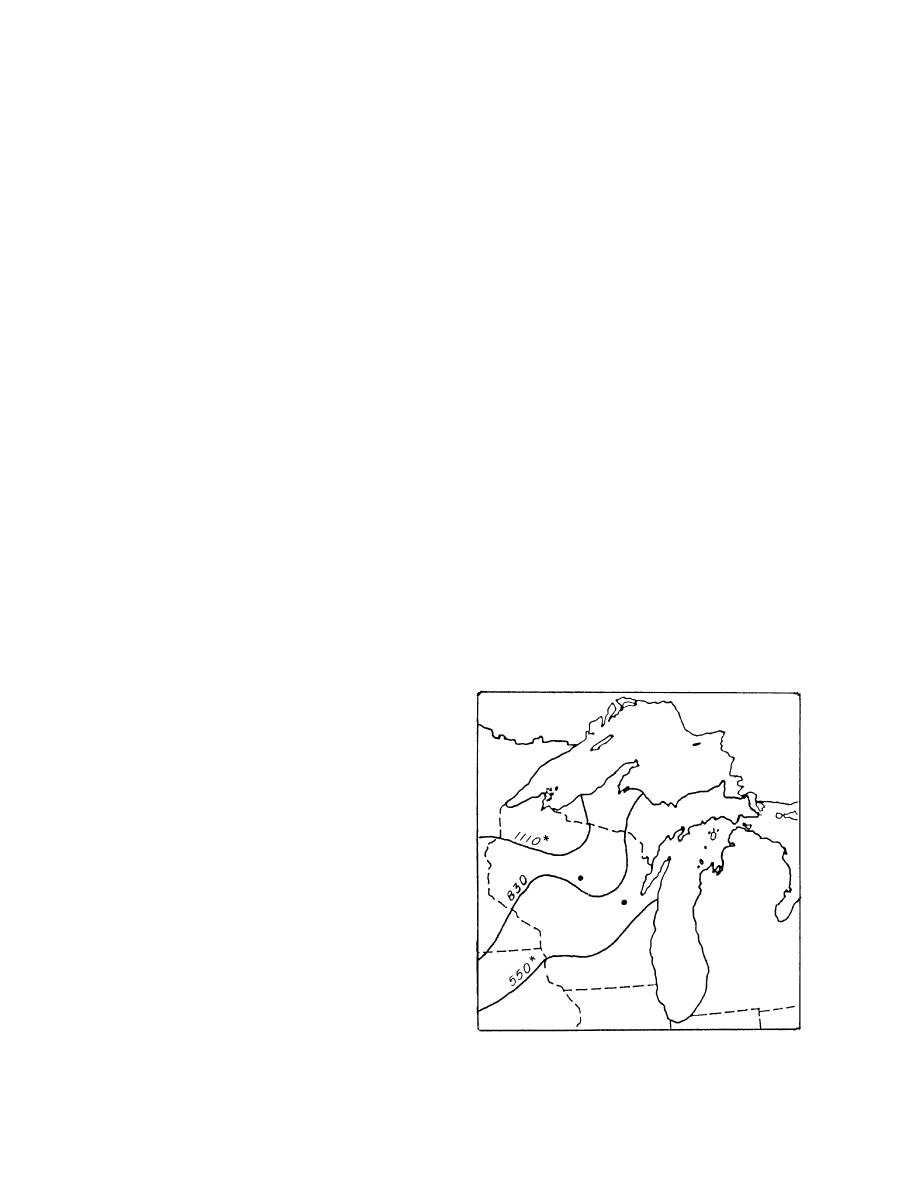
PCC Airfield Pavement Response
During Thaw-Weakening Periods
A Field Study
VINCENT C. JANOO AND RICHARD L. BERG
INTRODUCTION
pavement temperatures were measured at selected lo-
cations at each airport. This report gives a general de-
In the spring of 1986, CRREL conducted a field
scription of the airports and the pavement structures
study for the Federal Aviation Administration (FAA)
and a comprehensive analysis of the FWD measure-
on how airport pavements responded to frost action.
ments.
The emphasis was on thaw weakening. The study was
conducted at three regional airports in Wisconsin--
Central Wisconsin Airport (CWA), Outagamie County
DESCRIPTION OF AIRFIELDS
Airport (OCA) and Wittman Field. The pavement sur-
Central Wisconsin Airport (CWA)
faces at CWA and OCA were predominately Portland
CWA is located in Mosinee, Wisconsin (Fig. 1).
Cement Concrete (PCC), whereas at Wittman they
The subsurface soils at CWA are silts, sandy silts and
were mostly Asphalt Concrete (AC). The results of a
clayey silts and can be classified as either SM or ML
study on AC airfield pavement structures during thaw-
using the Unified Soil Classification System, and as
weakening periods can be found in a previously pub-
F3 and F4 with respect to frost-susceptibility (Stark
lished report (Janoo and Berg 1991). This report exam-
and Berg 1989). F3 and F4 soils are very susceptible
ines PCC airport pavements during thaw periods.
to frost heave and thaw weakening. Stark and Berg
It is accepted that in the winter the load carrying
(1989) also reported that the subgrade was not uni-
capacity of pavements increases dramatically because
of freezing of the pavement structure. This is more dra-
matic in AC pavements because of the stiffening of the
asphalt at low temperatures. This increase is also seen
in PCC pavements because of a similar stiffening of
the base, subbase and subgrade.
During thaw periods, the pavement structure below
the PCC layer thaws and can become saturated with
water from the melting ice lenses and infiltration of
surface water from rain or melting snow. This satura-
tion of the material reduces the strength of the base,
subbase or subgrade, or all three, leading to reduced
CWA
bearing capacity of the entire pavement structure. In
Mosinee
addition, the large temperature differentials during
thawing periods can cause curling of the corners and
Appleton
OCA
edges of slabs of PCC pavements, thus affecting load
transfer across joints.
The objective of the study was to determine any
structural changes in PCC airport pavements during
thaw-weakening periods. To evaluate these changes,
CRREL conducted Falling Weight Deflectometer
(FWD) measurements to quantify the changes in the
* Mean Air Freezing Index (C-days)
stiffness of the pavement structure and the load trans-
fer efficiency of the joints. In addition, subsurface
Figure 1. Location of airfields.



 Previous Page
Previous Page
